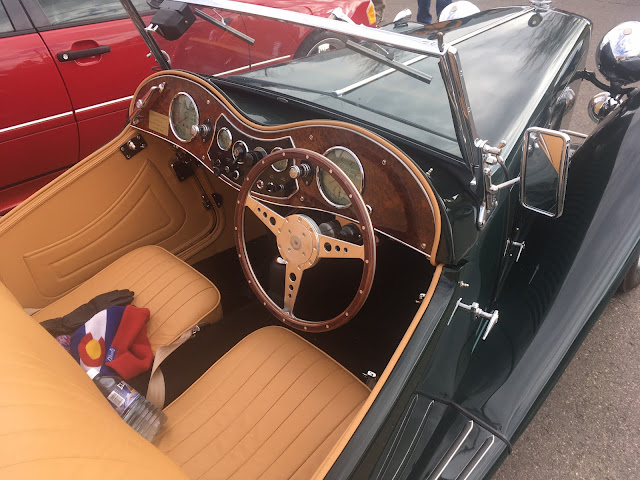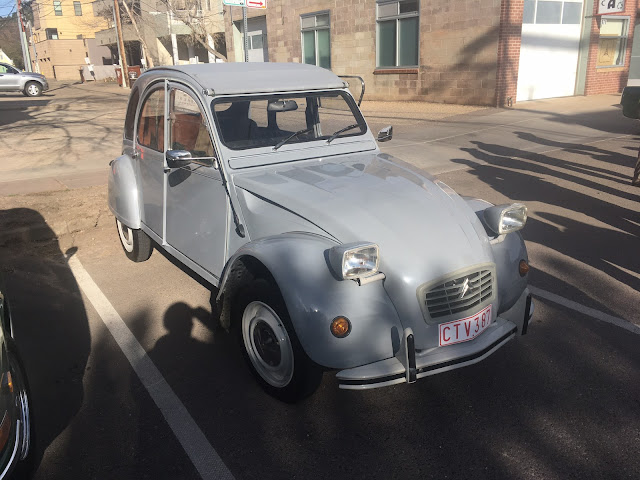The word taliesin means "shining brow" in the native language of Frank Lloyd Wright's Welsh ancestors, and he chose it to describe the site he chose on 490 acres of rolling green countryside in Spring Green, Wisconsin to build a house and architecture studio. In the plan drawing below, the Workroom / Studio is immediately to the right of the Loggia, with the main living quarters to the left. The Garage is in the upper righthand corner…the first Model T had appeared only 3 years before Taliesin was built.
Wright chose to notch the sprawling complex into a hillside, rather than plunk it onto the top of that brow, because he said that placing a building at the summit of a hill would have the effect of losing the hill. The first version of Taliesin was completed in 1911, the year before the Titanic sank. The photo below shows how the complex looked during the winter of 1911-12...
By this time Wright had evolved the themes characteristic of the Prairie Style, and these included hipped (or sometimes flat) roofs with broad, sheltering eaves to shade bands of equal-height windows and to visually anchor forms to landscape, as well as rectilinear masses interlocking with exterior spaces which flowed into interiors at gardens, terraces and balconies. The effect was enchanting except when roofs leaked…Wright famously told a complaining client to move his chair when a roof leaked on a dinner party. The photo below shows how the Taliesin complex looked in the summer of 1912. Living quarters are to the right of the loggia (breezeway); the architecture studio is off to the left.
Forensic engineers will tell you that the steady drip of water over decades destroys more buildings than dramatic events like tornadoes and fires…this may be changing as we watch wildfires caused by global warming consume houses in the West. But structures at Taliesin were destroyed by fire twice, in 1914 and 1925, in a locale not known for wildfires.That first fire was the result of arson, when in August 1914 a deranged employee killed Wright's mistress, Martha Borthwick, her two children, and 3 others before setting the dining room around them on fire. Only two of Wright's staff escaped the blaze. Wright, traveling on business during this disaster, returned to find much of the living quarters in charred ruins. This tragedy, a bit more than two weeks after the beginning of World War I, occurred when Wright was spending time on projects like the Imperial Hotel in Tokyo, which was completed in 1915.
He returned to redesign and rebuild the Taliesin complex, only to see it burn again as the result of an electrical fire in 1925. During the Twenties, Wright's studio in Taliesin produced projects for Los Angeles clients with a Mayan-inspired theme unrelated to the Prairie Style, but their third version of the Taliesin complex after the 1925 fire experimented with roof and window shapes that were refinements of Prairie Style...In 1928, Wright consulted on the design of the Arizona Biltmore Hotel in Phoenix, but it opened only 8 months before the stock market crashed, and new commissions disappeared, along with jobs for millions, as the Great Depression took hold in the early Thirties. Frank Lloyd Wright's third wife, Olgivanna, suggested starting an architecture school at the Spring Green compound; this became the Taliesin Fellowship. Opening in 1932, it proved to be a source of steady cash flow from tuitions, and also a source of drafting personnel for the studio...
It kept the studio going until new commissions, like the Johnson Wax headquarters in Racine and the Fallingwater house for the Kaufmann family in Pennsylvania, arrived in the mid-Thirties and sparked an interest in Wright that put him on the cover of Time Magazine. It also put Wright and Olgivanna in a position to buy the Arizona property that became Taliesin West*, where the Fellowship established a winter headquarters for the studio and school that opened by 1940. Work continued at Taliesin Spring Green, which was now also known as Taliesin North. When I visited, the buildings and grounds were well-maintained, but preservation experts were still addressing some unresolved details relating to roofing, flashing and water intrusion, the unglamorous but essential routine of keeping buildings intact over time...
The Taliesin North complex was listed as a National Landmark in 1976, and by UNESCO as a World Heritage Site in 2019. Other structures on the site included as National Landmarks, but not in the World Heritage Site, included Wright's Romeo and Juliet windmill from 1896, the house he designed for his sister and brother-in-law in 1907, the 1901 Hillside Home School for Wright's aunt, and the Midway Barn from 1920, which served agriculture which is today continued by tenant farmers. The green, wooded property has expanded over the years to include 600 acres...
In January 2020 the Taliesin School of Architecture was closed a season before a global pandemic would suspend in-person class attendance at many schools and universities. In the case of Taliesin, the ending to nearly nine decades of educational efforts resulted from unresolved disputes between the school's board and the Frank Lloyd Wright Foundation. Tours of the buildings at Taliesin North can still be scheduled, however, at taliesinpreservation.org.
*Footnote: For a brief look at the other (and later) studio and educational compound carrying the Taliesin name, see "Roadside Attraction: Frank Lloyd Wright's Taliesin West, and the Taliesin Vehicle Fleet", posted here on January 22, 2022. The Taliesin North complex was listed as a National Landmark in 1976, and by UNESCO as a World Heritage Site in 2019. Other structures on the site included as National Landmarks, but not in the World Heritage Site, included Wright's Romeo and Juliet windmill from 1896, the house he designed for his sister and brother-in-law in 1907, the 1901 Hillside Home School for Wright's aunt, and the Midway Barn from 1920, which served agriculture which is today continued by tenant farmers. The green, wooded property has expanded over the years to include 600 acres...
In January 2020 the Taliesin School of Architecture was closed a season before a global pandemic would suspend in-person class attendance at many schools and universities. In the case of Taliesin, the ending to nearly nine decades of educational efforts resulted from unresolved disputes between the school's board and the Frank Lloyd Wright Foundation. Tours of the buildings at Taliesin North can still be scheduled, however, at taliesinpreservation.org.
Monochrome Photo Credits:
Wikimedia
Plan Drawing:
franklloydwright.org
Color Photo Credits:
All color shots are by the author.


















































